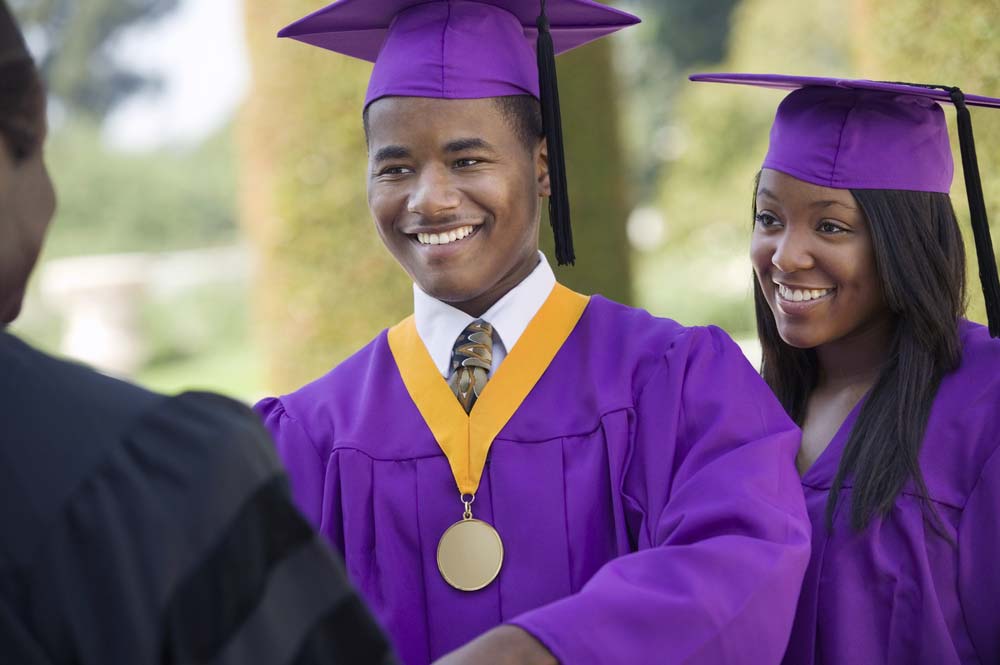
sirtravelalot / Shutterstock.com
You may have come across the phrase “historically black colleges and universities” when performing a college search and wondered what it means for an institution to be historically black. It actually is as simple as it sounds; historically black colleges and universities (also called HBCUs) are those that have a long history of serving the African American community in the United States. According to the Higher Education Act of 1965, a school is designated as a HBCU if it was established before the passage of the Civil Rights Act of 1964—before segregation was outlawed, colleges and universities serving white students did not accept black students, so the black community stepped up to create institutions of their own. As such, to earn the designation of HBCU, a school’s mission must be to educate African Americans.
According to American RadioWorks, “After the Civil War, African American education blossomed. Black ministers and white philanthropists established schools all across the South to educate freed slaves. These schools, more than 100 of which are still open today, became known as historically black colleges and universities.” In fact, there are 102 HBCUs still operating throughout the country.
Many historically black colleges and universities owe their existence to the Morrill Act of 1890. Nearly 30 years earlier, the Morrill Act of 1862 granted each congressman 30,000 acres of land to dedicate to creating colleges, but few of the established institutions served the black population. Following the Civil War, the Second Morrill Act of 1890 was enacted. This marked a turning point in black education. According to the act, any state with land-grant schools that were open only to white students had to establish land-grant schools that were open to black students (or they had to change the rules of existing schools to allow black students to enroll). Rather than the integration of existing colleges, this led to the establishment of numerous African American-serving institutions that would later become HBCUs in the American south. Shaw University (in Raleigh, NC) became the first HBCU established after the completion of the Civil War.
Segregation wasn’t outlawed until the passage of the Civil Rights Act of 1964, almost 100 years after Shaw University opened its doors. In the decades before, colleges serving the African American community thrived. Black teachers and professors flocked to these schools where they were actually given the opportunity to work. Some of the smartest black students who wouldn’t otherwise have the opportunity to attend college also converged on historically black colleges and universities and were trained in a variety of subjects: math, science, education, anatomy. Even today, HBCUs are awarding 27% of the STEM degrees awarded to African American students (and HBCUs only make up 3% of American colleges and universities).
While HBCUs don’t just serve African Americans, the overwhelming majority of students at HBCUs are black. In 2016, 23% of students attending historically black colleges and universities were not black. This is up from 15% in 1976. Of black students who attend college, about 9% of them are enrolled at HBCUs, down from 18% in 1976.
The background of students, too, has changed over time. According to historian Marybeth Gasman, “Historically black colleges used to have overwhelming numbers of middle class students, highly prepared students, and then their makeup changed. Now you have a big mix. You have affluent students, highly prepared students, you have middle income students, mid range preparation, and you have low income and you have very little preparation.” This creates a slew of problems for HBCUs, namely by lowering graduation rates. When few students are graduating on time, less money is given to the school, meaning that facilities age and faculty are underpaid. These problems take significant resources to overcome, but it is doable.
U.S. News and World Report ranked 80 historically black colleges and universities based on their graduation and retention rates; the results of a survey of presidents, provosts, and deans of admission at HBCUs; faculty; selectivity; financial resources; and alumni donations. You can find the full list here, but the top five HBCUs are:
- Spelman College in Atlanta, GA
- Howard University in Washington, DC
- Hampton University in Hampton, VA
- Morehouse College in Atlanta, GA
- Xavier University of Louisiana in New Orleans, LA
HBCUs have some famous alums, too. Civil rights activist Martin Luther King, Jr. graduated from Morehouse College. Thurgood Marshall, the first African American Supreme Court justice, went to both Lincoln University and Howard University. Actress, philanthropist, and media personality Oprah Winfrey attended Tennessee State University. Ruben Studdard, of American Idol fame, went to Alabama A&M University. You, too, could become a famous alum.
-
Vocational Education from the 1900s to Today
-
The Reality of New York State’s Free College Education Bill
-
Distance Education through the Ages
-
Co-Ed and Gender-Neutral Housing from the 1960s to Present
-
The TRIO Programs
-
The History of Higher Ed for Students Who Are Hard of Hearing or Deaf
-
Environmental Education and Sustainable Schools

